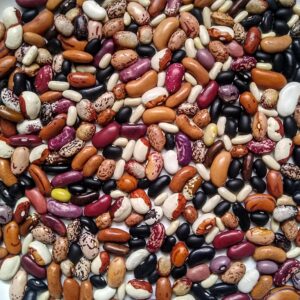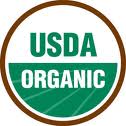
 Yesterday, the National Organic Program (NOP) released its draft guidance (opens PDF) on the commercial availability of organic seed. This is a much anticipated document given that the National Organic Standards Board (NOSB) made recommendations (opens PDF) in 2005 and then again in 2008. The comment period is open until August 12. Comments can be submitted via internet or mail (Toni Strother, Agricultural Marketing Specialist, National Organic Program, USDA–AMS–NOP, 1400 Independence Ave., SW., Room 2646 So., Ag Stop 0268, Washington, DC 20250–0268).
Yesterday, the National Organic Program (NOP) released its draft guidance (opens PDF) on the commercial availability of organic seed. This is a much anticipated document given that the National Organic Standards Board (NOSB) made recommendations (opens PDF) in 2005 and then again in 2008. The comment period is open until August 12. Comments can be submitted via internet or mail (Toni Strother, Agricultural Marketing Specialist, National Organic Program, USDA–AMS–NOP, 1400 Independence Ave., SW., Room 2646 So., Ag Stop 0268, Washington, DC 20250–0268).
OSA is thankful the NOP is responding to NOSB’s recommendations and moving forward in developing guidance on issues pertaining to the commercial availability of organic seed. We’re glad the draft guidance emphasizes that certifying agents must assess the progress of certified producers in sourcing organic seed on an annual basis. We’re also happy to see that certified operations must establish a documented procedure for sourcing organic seed that includes the identity of the seeds sought, the search methods to source organic varieties, and records that demonstrate the use of organic seed or the commercial unavailability of organic seeds. The draft guidance also makes clear that organic seed cannot be avoided based on the price of the seed.
But we believe the NOP could go further in their guidance. Some of the NOSB’s recommendations would help support increased availability of organically grown seed as well as usage, but many of these recommendations aren’t included in this draft guidance. For example, OSA agrees with the NOSB that we must work toward the goal of a healthy, viable organic seed industry. To achieve this goal, it is imperative that both the market supply and market needs — that is, which varieties aren’t available as an organic variety — are known to producers and suppliers of organic seed. The NOP should collect information on varieties that aren’t available as an organic variety, to document commercial unavailability, or recommend a process and central hub for this information to be collected as a requirement.
Furthermore, OSA research shows that when certified producers are encouraged to take extra measures to source organic seed — such as on-farm field trials or looking at more than three sources for a certain variety — they respond by sourcing more organic seed. NOP should encourage certifiers to require producers to go beyond three sources. NOP could also establish organic seed usage — or increased percentage each year of organic seed — as an Organic System Plan goal.
We know that the lack of reliable data is one of the barriers to building the organic seed sector. In OSA’s 2010 State of Organic Seed survey of organic farmers in 45 states, only 20 percent reported that they are using 100 percent organic seed. The remaining 80 percent of respondents pointed to a lack of availability or equivalency. Our survey also shows that 83 percent of respondents agree that varieties bred for organic systems are important to the overall success of organic agriculture.
Still, it’s clear that farmers need to be educated on the benefits of organically produced seed. And certifiers also need training on the benefits and availability of organic seed. Seed bred in organic production systems is important to the ongoing growth and success of organic, because plants co-evolve with their environment and when placed in a complex organic production system they develop regionally adapted traits that perform under organic production challenges. All stakeholders must understand the value of organic seed.
We don’t want to force organic farmers to use varieties that aren’t appropriate for their farming systems, but we also need farmers to participate in organic seed systems by trialing and using organic varieties. And we need the organic community as a whole to stay very focused on investments and information sharing to move us toward more diversity and availability in the organic seed sector.
